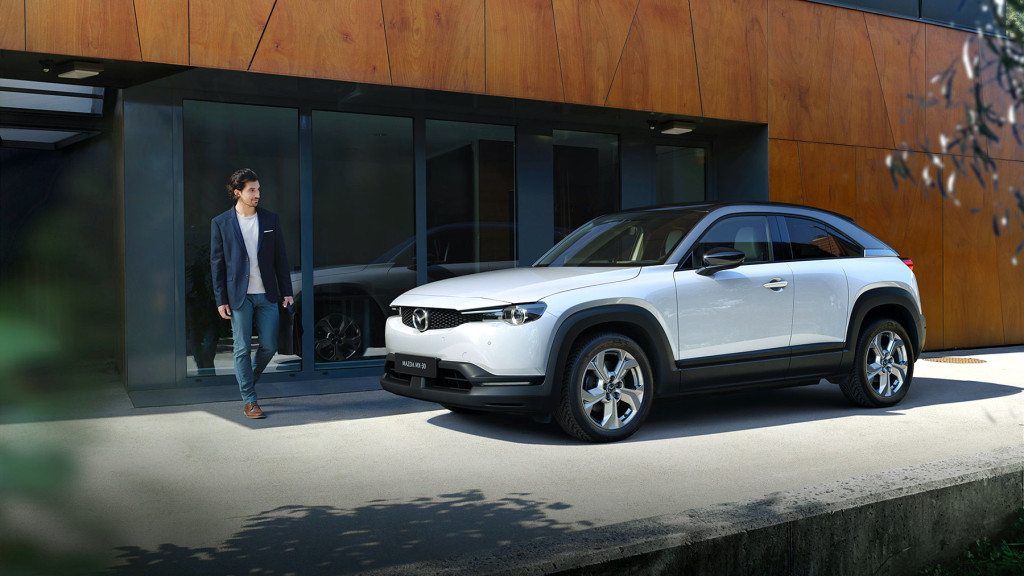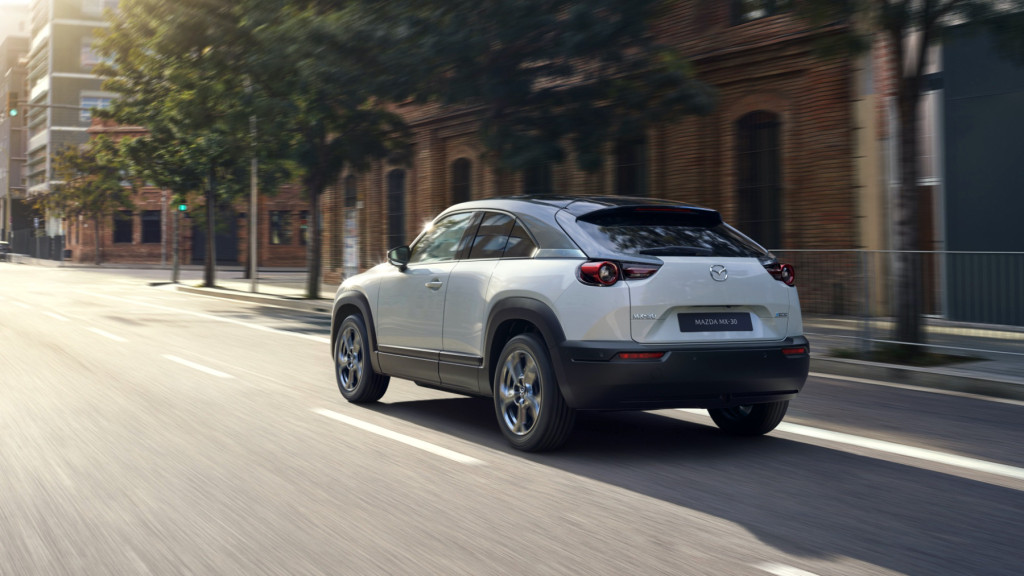Mazda confirmed Tuesday that the 2023 MX-30 EV will arrive in California dealerships this spring.
Prices for the 2023 MX-30 EV are up somewhat, to $35,385 for the base model and $38,395 with the Premium Plus package. At the base level, that’s $740 higher than the 2022 Mazda MX-30 price.
Earlier this week, Mazda confirmed that a rotary-engine range-extended version of the MX-30, called the MX-30 R-EV, will be detailed this Friday, Jan. 13. It hasn’t yet teased any other details, however it revealed a clever new logo for the variant that incorporates the shape of a Wankel-engine rotor.
It appears any U.S. arrival for the R-EV is on hold. A Mazda USA rep told Green Car Reports: “Globally, Mazda introduces models and powertrains to markets based on a multi-solution strategy that considers regional differences in energy production, environmental regulations, and customer needs. In the U.S., we’re currently focused on electrifying our upcoming CX-90 and CX-70 that will debut this year.”

2023 Mazda MX-30 EV
Whether that means a delay or an outright cancellation for the R-EV, it’s not clear. In 2021, Mazda confirmed as U.S.-bound the range-extended version of the MX-30 due for the 2023 model year. Later in 2021, after reports from Japan that the range-extended version might still be canceled, Mazda USA insisted it remained on schedule.
The MX-30 is Mazda’s first electric vehicle, and at the time of its introduction as a 2021 model, Mazda said that it would be made available in other states in 2022. But Mazda confirmed to Green Car Reports that it would once again be sold only in California for the 2023 model year.

2023 Mazda MX-30 EV
So far Mazda has only been selling the MX-30 in California, and after a very limited 505 initial units arrived in the U.S. and sold—making it supercar-rare—Mazda was mum on whether or not more would arrive or whether there would even be a second model year for the MX-30 at all.
Mechanically, the MX-30 carries over with its single front motor producing 143 hp and 271 lb-ft of torque, a 35.5-kwh lithium-ion battery pack, and an EPA estimated range of just 100 miles. The range-extended rotary version is expected to use a small Wankel rotary engine in a series hybrid configuration, meaning it will only drive a generator that feeds power back to the battery and drive system.
The Mazda MX-30 EV offers quirky packaging, with wide-opening rear-hinged rear doors, but it doesn’t pay dividends in real-world usability. Even though its exterior dimensions are close to those of the gasoline CX-30, the MX-30 EV somehow offers far less usable passenger space.

2023 Mazda MX-30 EV
The 2023 MX-30 EV’s feature set appears unchanged versus 2022. It includes an 8.8-inch display screen with Apple CarPlay and Android Auto, a sunroof, an 8-way power driver seat, heated front seats, power-folding mirrors, synthetic-leather upholstery, and a leather-wrapped steering wheel and shift knob. The Premium Plus package adds 12-speaker Bose premium audio, satellite radio, and a heated steering wheel.
In safety, all MX-30s get automatic emergency braking, active lane control, blind-spot monitors, rear parking sensors, and adaptive cruise control, while the Premium Plus package adds steering assist to the blind-spot monitors, front cross-traffic warnings, front parking sensors, and a surround-view camera system.
The MX-30 is unlikely to qualify for the federal EV tax credit as it’s built in Japan and the new credit requires North American assembly. However, due to a loophole in the related Commercial Clean Vehicles credit it might qualify for broadened tax-credit-enabled lease deals—something Mazda might consider if it decides to expand availability anytime soon.








